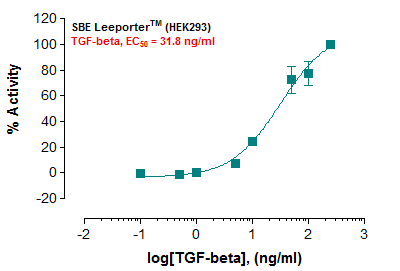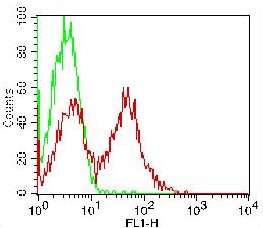Recombinant Human Chloride Intracellular Channel Protein 4/CLIC4 (N-6His)
Shipping Info:
For estimated delivery dates, please contact us at [email protected]
| Amount : | 50 µg |
| Content : | Supplied as a 0.2 µm filtered solution of 20mM TrisHCl, 100mM NaCl, 1mM DTT, pH 8.0. |
| Storage condition : | Store at -20°C, stable for 6 months after receipt. Please minimize freeze-thaw cycles. |
| AA sequence : | MGSSHHHHHHSSGLVPRGSHMALSMPLNGLKEEDKEPLIELFVKAGSDGESIGNCPFSQRLFMILWLKGVVFSVTTVDLKRKPADLQNLAPGTHPPFITFNSEVKTDVNKIEEFLEEVLCPPKYLKLSPKHPESNTAGMDIFAKFSAYIKNSRPEANEALERGLLKTLQKLDEYLNSPLPDEIDENSMEDIKFSTRKFLDGNEMTLADCNLLPKLHIVKVVAKKYRNFDIPKEMTGIWRYLTNAYSRDEFTNTCPSDKEVEIAYSDVAKRLTK |
Source: E.coli.
MW :30.9kD.
Recombinant Human CLIC4 is produced by our E.coli expression system and the target gene encoding Met1-Lys253 is expressed with a 6His tag at the N-terminus. Chloride Intracellular Channel Protein 4 (CLIC4) is a 253 amino acid single-pass membrane protein that localizes to both the nucleus and the cytoplasm and contains one GST C-terminal domain. CLIC4 is expressed in various tissues and exhibits an intracellular vesicular pattern in Panc-1 cells (pancreatic cancer cells). CLIC4 acts as a monomer which is able to form selective ion channels in target proteins, thus facilitating the transport of chloride and other ions. CLIC4 is believed to have a role in apoptosis and is able to translocate to the nucleus under stress conditions. CLIC4 has alternate cellular functions like a potential role in angiogenesis or in maintaining apical-basolateral membrane polarity during mitosis and cytokinesis.
MW :30.9kD.
Recombinant Human CLIC4 is produced by our E.coli expression system and the target gene encoding Met1-Lys253 is expressed with a 6His tag at the N-terminus. Chloride Intracellular Channel Protein 4 (CLIC4) is a 253 amino acid single-pass membrane protein that localizes to both the nucleus and the cytoplasm and contains one GST C-terminal domain. CLIC4 is expressed in various tissues and exhibits an intracellular vesicular pattern in Panc-1 cells (pancreatic cancer cells). CLIC4 acts as a monomer which is able to form selective ion channels in target proteins, thus facilitating the transport of chloride and other ions. CLIC4 is believed to have a role in apoptosis and is able to translocate to the nucleus under stress conditions. CLIC4 has alternate cellular functions like a potential role in angiogenesis or in maintaining apical-basolateral membrane polarity during mitosis and cytokinesis.
Endotoxin : Less than 0.1 ng/µg (1 IEU/µg) as determined by LAL test.
For Research Use Only. Not for use in diagnostic/therapeutics procedures.
| Subcellular location: | Cytoplasm, Cytoplasmic vesicle membrane, Nucleus matrix, Cell membrane, Mitochondrion, Cell junction |
| Tissue Specificity: | Detected in epithelial cells from colon, esophagus and kidney (at protein level). Expression is prominent in heart, kidney, placenta and skeletal muscle. |
| BioGrid: | 117431. 47 interactions. |
|
There are currently no product reviews
|

















.png)









